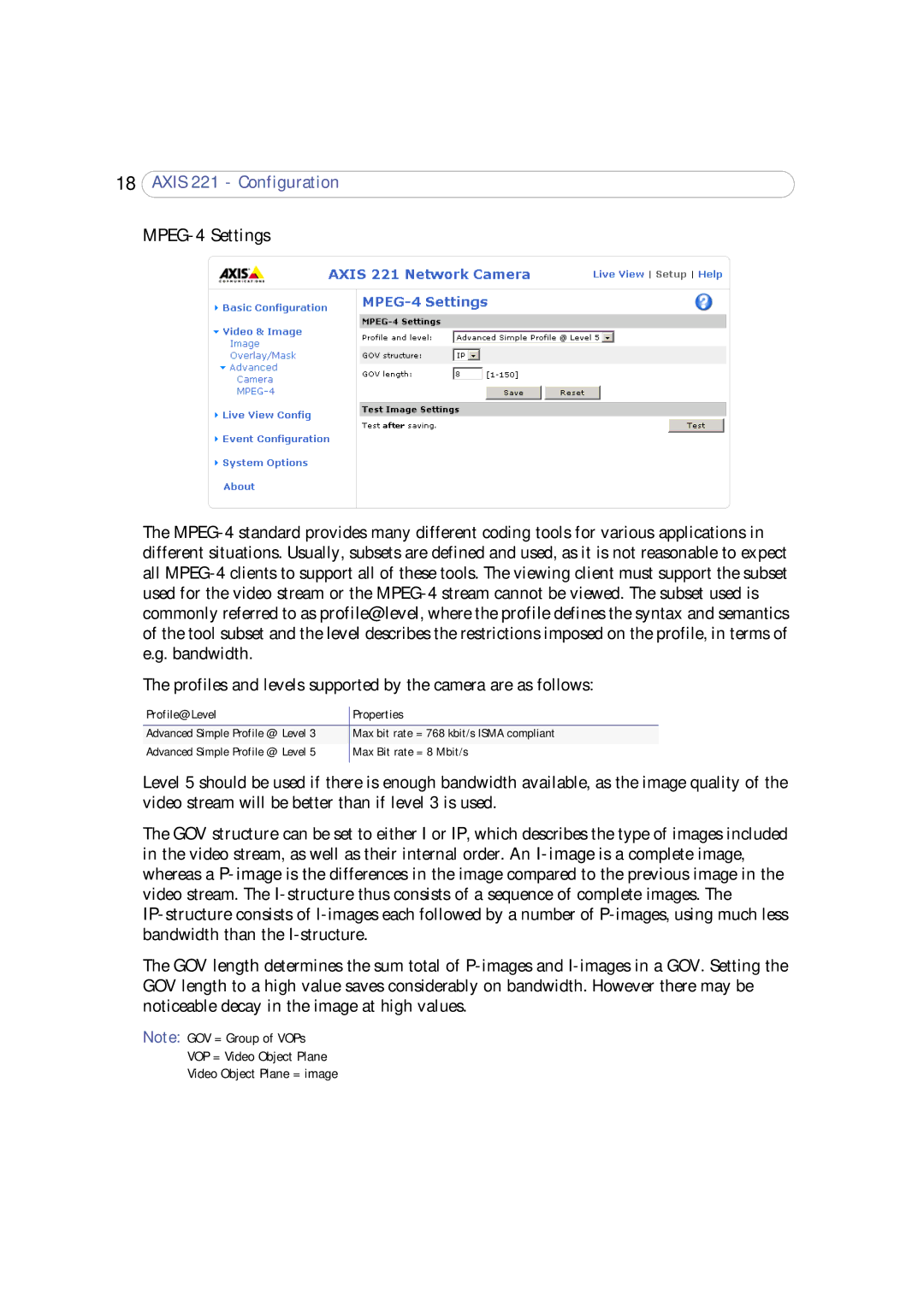18AXIS 221 - Configuration
MPEG-4 Settings
The MPEG-4 standard provides many different coding tools for various applications in different situations. Usually, subsets are defined and used, as it is not reasonable to expect all MPEG-4 clients to support all of these tools. The viewing client must support the subset used for the video stream or the MPEG-4 stream cannot be viewed. The subset used is commonly referred to as profile@level, where the profile defines the syntax and semantics of the tool subset and the level describes the restrictions imposed on the profile, in terms of e.g. bandwidth.
The profiles and levels supported by the camera are as follows:
Profile@Level | Properties |
| |
Advanced Simple Profile @ Level 3 | Max bit rate = 768 kbit/s ISMA compliant |
Advanced Simple Profile @ Level 5 | Max Bit rate = 8 Mbit/s |
| |
Level 5 should be used if there is enough bandwidth available, as the image quality of the video stream will be better than if level 3 is used.
The GOV structure can be set to either I or IP, which describes the type of images included in the video stream, as well as their internal order. An I-imageis a complete image, whereas a P-imageis the differences in the image compared to the previous image in the video stream. The I-structurethus consists of a sequence of complete images. The IP-structureconsists of I-images each followed by a number of P-images, using much less bandwidth than the I-structure.
The GOV length determines the sum total of P-images and I-images in a GOV. Setting the GOV length to a high value saves considerably on bandwidth. However there may be noticeable decay in the image at high values.
Note: GOV = Group of VOPs
VOP = Video Object Plane
Video Object Plane = image

